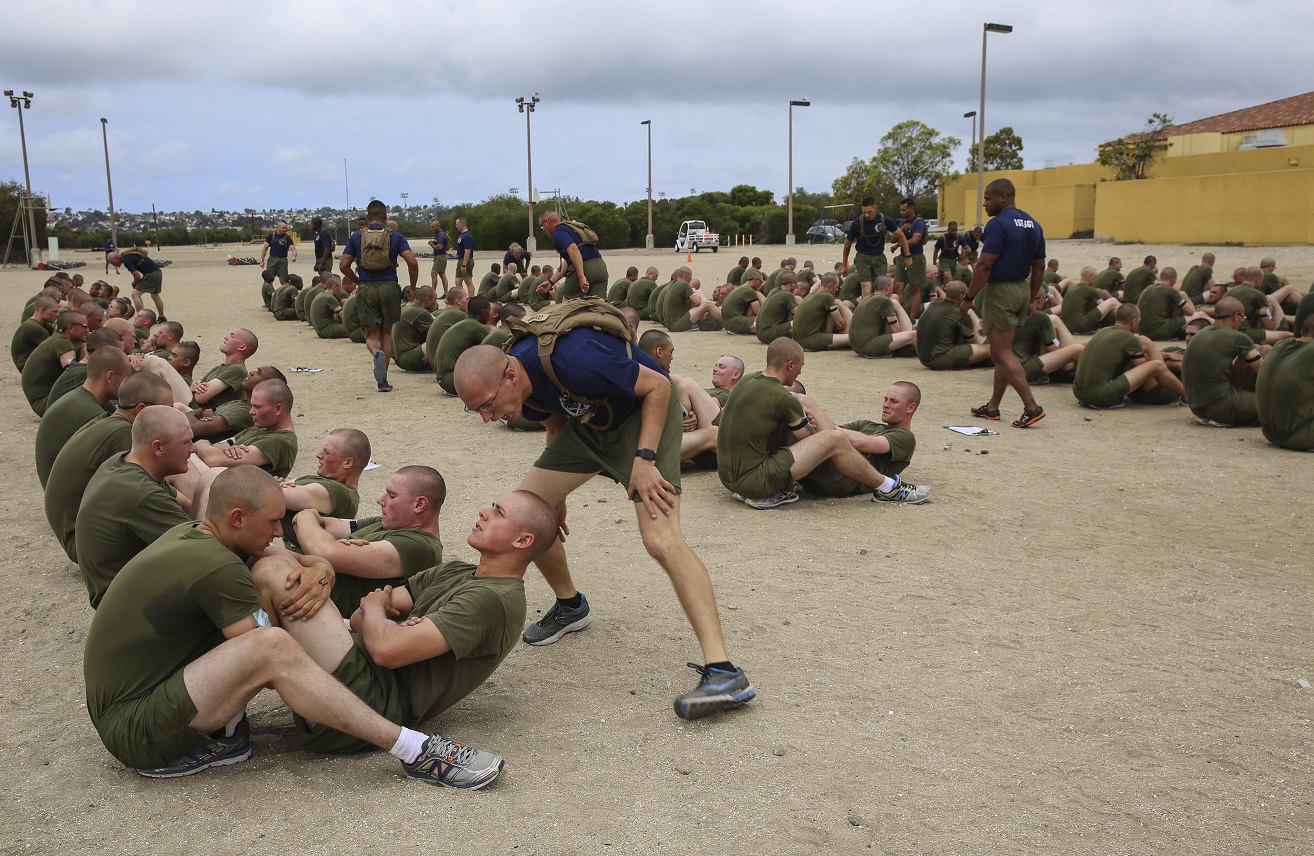The Operation that Changed the World – Operation Bagration
When most people think about the Second World War, they often imagine things like traumatic beach landings, or the sounds of roaring engines mercilessly toying with the tiny images of ships. The great scenes of “Saving Private Ryan” and “Tora,Tora, Tora” offer us the sheer disarray of war with its emotional facets, however do films like these offer a sufficient portrayal of the significance behind such battles? That is to say a kind of significance that is not guided by emotion and humanistic storytelling, but by a more holistic approach in which a nation’s ethos is tried and tested. Of course the attack on Pearl Harbor sparked a national outcry in the minds of the American people, but many of these archetypal stories offer a glimpse on how war changes a person, not necessarily on how war changes perspective.
Cold War rhetoric still remains ingrained in many Westerners’ minds hence many of the countless battles and suffering endured by the Soviet people go largely ignored. This is partly justified given the intensely authoritarian character of the Soviet Union, however it has created a knowledge gap in the historiography of the war. Although with obvious exceptions, especially in the US military, what we lack in the west is a scientific grasp of warfare; this being a consequence of not ‘enduring’ the scientism of Marxist materialism. What I mean by this, is that Marxists often treat their ideology as a sort of science, thus they incorporate certain scientific tools in order to predict certain outcomes. Nowhere is this more apparent than in the concept of the ‘correlation of forces’ which offers a statistical ratio which compares the strength of opposing forces. This article is not arguing for the validity of such ideological shenanigans, rather it is arguing that the Soviets did in fact introduce a brand new perspective to warfare by introducing an almost scientific way of conducting warfare.
Apart from a handful of military circles and experts we remain blissfully unaware of the scientific lens of war and trade that for individual stories of heroism and what not. It is no wonder that even the most avid amateur military historians in North America have a hard time describing the overall characteristics of American doctrine. Just by looking at Youtube one can see how this lack of understanding creates a sort of dry analysis of historical events, where one either recites the chronology of battles, or one offers broad, often qualitative factors to explain highly complex events.
What should be understood is that the West has relied so heavily on qualitative analyses of military warfare whereas the Soviet Union relied on quantity, hence their obsession with charts like the correlation of forces that was previously mentioned. And this application of quantity is nowhere more apparent than in the mid-1944 operation code-named “Bagration”. The Soviet Union, suffering from appalling casualties for much of the Second World War, was finally able to overcome the doctrinal hurdles of Stalinist maneuvering by successfully applying the concept of “Deep Battle” (Glantz and House 1995, p.286-287). It was in this battle that they successfully employed concepts like “Maskirovka”, otherwise known as deception, and concentration of forces in focal areas. I will put it in a much simpler way. Military strategy up until that point relied heavily on tactical developments. Generals mimicked the brilliant strategies of Hannibal, Napoleon, and Caesar, but they paid very little attention to the broader campaign- namely the Operational Level of Warfare…
“The Operational level is concerned with employing military forces in a theater of war or theater of operations to obtain an advantage over the enemy and thereby attain strategic goals through the design, organization, and conduct of campaigns and major operations”.
Source: Three Levels of War USAF College of Aerospace Doctrine, Research and Education (CADRE) Air and Space Power Mentoring Guide, Vol. 1 Maxwell AFB, AL: Air University Press, 1997

It is true that elements of this level of warfare have always existed, but industrialization in the 19th century gave way to the advent of mass mobilization which in turn created sustainable front lines that allowed for Operations to come to fruition (Nozdrachov 1997, p.2). People may yell that the Soviets were able to achieve such an Operation due to the availability of material, and this is partly true, as the rate of Lend-Lease deliverables reached a peak in late 1943 (Harrison 1995, p.70). It is also the case that Lend-Lease helped the Soviet economy from overheating, which was experiencing a degree of inflationary pressure (Freeze 2009, p.391). However, both sides at this point were exhausted, and the Soviets were starting to suffer manpower shortages in the front (Glantz and House 1995, p.179). They held a steady numerical advantage over the Axis along the entirety of the front (ratio When Titans), however nobody seems to complain when it was the Germans who held a numerical superiority over the French, 70 years prior. During that conflict (Barry 2007), nobody puts numerical superiority in the equation of military brilliance. Even then, a 2:1 ratio is simply not enough to win a war. For example, David Glantz stated that armies in the war could defend river lines at a disadvantage of more than 1:2 (Glantz and House 1995, p.258). Hence, these trivialities only serve to undermine the critical juncture that was being endured by the Soviet armed forces.
The Germans, with the concept of Bewegungskrieg, often relied on exploiting a single weak point in a front-line, and would often thrust their mechanized forces (Forczyk 2016) first, which comes as a very risky maneuver in warfare. They were often successful in such operations, as attested by the 1940 attack through the Ardennes, and the various encirclement’s during the onset of Operation Barbarossa. However, given the limited scope of such operations, they never mounted to achieving more strategic goals. If one were to look at the 1941 advance on Moscow and the 1942 advance on Stalingrad, one can see confusion and a lack of concrete planning. Many blame Adolf Hitler for this, but those same commanders often conducted blunders that I cannot fit in this one article- hence I recommend this video that will do the subject more justice.

Now if one compares the German strategy of Bewegungskrieg with Deep Battle, one can see much more planning and consideration for future events in the latter. Deep battle was carefully crafted with several templates ascribed to the units that were to conduct the breakthrough and those that were to conduct the exploitation. Firstly, infantry supported by artillery and some tank battalions would breakthrough the enemy front in key focal points (Nozdrachov 1997, p.32). The point was to concentrate units in order to achieve massive local superiority. In Bagration, such superiority reached up to 10:1 in certain sectors, which was thanks to the deceptive measures of Soviet rear units (Connor 1987, p.16). Secondly, carefully designed cavalry-mechanized forces would pass through the breakthrough and essentially disrupt the enemies rear (Connor 1987, p.15). This would force a retreat and would lead to deep encirclement’s that would decisively change the front-line. Tools such as the correlation of forces would allow the Soviets more predictive power in planning offensives.
For example, if one can achieve a ratio of 5:1 in town A and a 7:1 ratio in town B, then one can encircle the enemy using THESE kinds of forces, in this SPECIFIC way.
Deep battle essentially laid the groundwork for meaningful scientific offensives that would then have a degree of predictability. Even if the Soviets outnumbered the Germans throughout the whole front, they amplified this disparity in specific points and exploited this with the right kinds of units. They did so because the first echelon infantry units could soften the German defenses, whilst preserving the strength of the second echelon cavalry-mechanized forces. This is also why the double-envelopment was employed so much during Operation Bagration (Connor 1987, p.31); because Soviet doctrine allowed for multiple focal points. Bewegungskrieg weakened mechanized forces from the get-go, because they were the front-line units. It is also why so many German soldiers got trapped in Belorussia during Operation Bagration, whereas so many Soviet soldiers escaped the cauldrons of fire in the onset of the Great Patriotic War (Glantz and House 1995, p.53). And it is also why Franco-British forces were able to successfully evacuate at Dunkirk (1940). By first attacking with infantry in 1944, the Soviets tied down the enemy infantry. In 1941, the Germans conducted these massive encirclement’s by first attacking with tanks (Nozdrachov 1997, p.34), but they didn’t encircle as many soldiers as they could have, because the German infantry was far behind.
Such a short article cannot do justice to the sophistication of Deep Battle or of Operation Bagration, however I do invite the reader to watch the first part of the “Operation Bagration” series produced by me, with the permission of The Kommando Blog. It offers more detailed citations and concepts that have not yet been explored in this piece. That being said, I have given more personalized commentary on the concept here.
Bibliography
- When Titans Clashed by David Glantz and Jonathan House (1995 Edition)
- Three Levels of War USAF College of Aerospace Doctrine, Research and Education (CADRE) Air and Space Power Mentoring Guide, Vol. 1 Maxwell AFB, AL: Air University Press, 1997
- APPLICATION OF THE SOVIET THEORY OF “DEEP OPERATION” DURING THE 1939 SOVIET-JAPANESE MILITARY CONFLICT IN MONGOLIA by Oleksiy Nozdrachov, 1997
- UALPSIS OF DEEP ATTACK OPERATIONS OPEXATION BAGRATION BELORUSSIA 22 JUNE-29 AUGUST 1944 by William M. Connor, 1987
- Why Germany Lost: The Three Alibis (WW2HRT 27-06) by
World War II History Round Table, 2014 [Youtube] - Feats of History Podcast #1 Professor Richard Tempest [Molotov-Ribbentrop Pact] by Blitz of the Reich, 2018 [Youtube]
- The Rise and Fall of the Grand Alliance, 1941–45 by Ann Lane and Howard Temperley. Chapter: “The Soviet Economy and Relations with the United States and Britain, 1941–45” by Mark Harrison, 1995
- Russia A History by Gregory Freeze, 2009
- The Franco-Prussian War 1870-1871 by Quintin Barry, 2007
- Manstein is LYING! Breakout at Stalingrad Part 2 by TIK, 2018 [Youtube]
- Tank Warfare On The Eastern Front by Robert A. Forczyk, 2016




